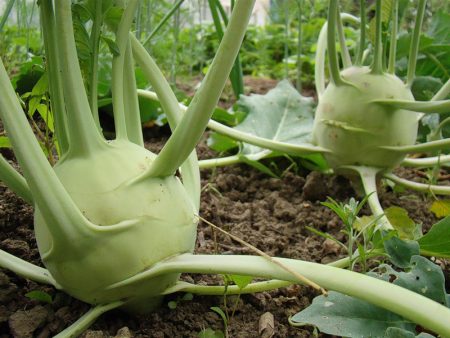
Kohlrabi is the most original cabbage variety. Small spherical stems are used for food, which are not inferior to lemon in terms of vitamin C content.
Getting a rich crop of healthy vegetables is simple enough even without additional chemical treatments. You can grow cabbage seedling and seedling method.
Content
Which grade to choose
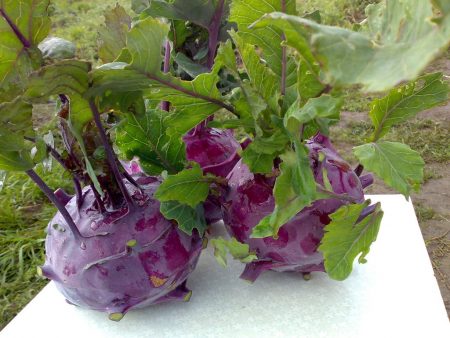
The variety is selected based on what time you want to get the crop. Early varieties are able to form a crop by the beginning of summer. Such cabbage can be successfully grown even in cold regions of the country. The best of them include hybrids Vienna White, Vienna White, Zadumka, Pikant, Optimus Blue, Relish. Early ripe cabbage is grown mainly in greenhouses or greenhouses. Late varieties ripen three months after sowing. They are planted in open ground in mid-summer to get a fresh vegetable in the fall. Late ripening varieties include: Athena, Giant, Kossak, Eder F1.
A variety is selected depending on the structure of the soil. For moderately moist loams, early species are more suitable. Late cabbage grows well on floodplain and loamy soils.
Conditions for planting turnip cabbage

Cabbage, like other cruciferous species, is demanding on heat, moisture and soil fertility. It can be planted both in a separate area, and as a seal for other vegetable beds, in places enriched with nitrogen. If kohlrabi already grew in the garden, then it can be returned to its original place only after 3-4 years. Kohlrabi is more successful in central Russia, as it prefers high humidity (more than 75%) and average air temperature (18-20 degrees). It does not tolerate heat, drought and constant rainfall - it immediately cracks, dries up, stiffens, becomes tasteless. However, kohlrabi, especially seedlings, tolerates a slight decrease in temperature. Although experimenting with this is not worth it - with an early landing it is better to keep the plantings under the film.
This culture reacts sharply to chemical processing. Their concentrated composition can burn foliage and make the fruit unsuitable for consumption. Therefore, kohlrabi is grown without the use of chemistry.
Features of growing kohlrabi in the open ground
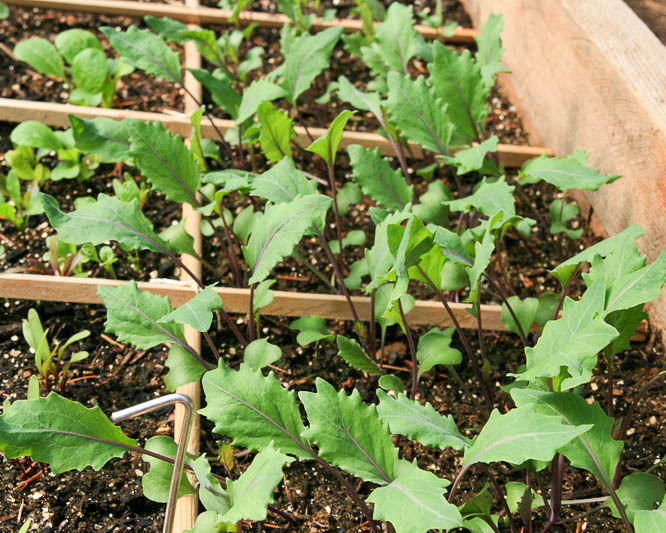
The precocity of the culture allows you to get two crops a year with proper agricultural technology. The fastest way to get a crop is through seedlings. For late ripening (autumn), you can sow the seeds directly into the soil or greenhouse. The timing of the growing season is also influenced by the timing of planting, soil fertility, top dressing and various care methods.
When to plant kohlrabi
Sowing seeds for seedlings for the first summer harvest is done at the end of March. Planting seedlings in the garden is supposedly focused on the May holidays. At this time, the kohlrabi seedling has two pairs of leaves. Seedlings are 40 days old.
Saplings can be planted in open ground in several passes - in early May, then in June and July. If you land in May, then in June you can get the first crop.
The second crop is obtained by seed method.In early June, they sow seeds immediately to the garden. In this case, the cabbage ripens in late summer. Harvest can also be harvested in October. To do this, sowing seeds for seedlings is carried out at the end of June.
Soil requirements
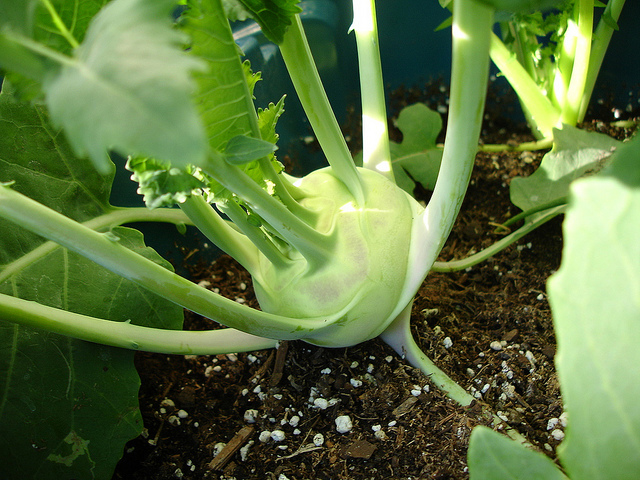
Kohlrabi is not demanding on the soil, but it is more juicy and dense in well-drained areas with a neutral level of acidity (for example, slightly acidic soil). For violent growth of green mass and fruit size, the soil should be enriched with nitrogen and other elements. If there is a shortage of potassium or phosphorus in the ground, then the stems will not grow juicy, and therefore with a bad taste.
The best predecessors of kohlrabi are legumes, carrots, onions, potatoes, beets and cucumbers. After them, the soil under kohlrabi begins to be prepared in the fall, digging a site with a good portion of manure and minerals.
Lighting
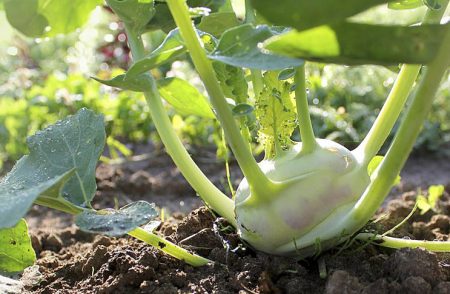
To make the stemblend juicy and resilient, kohlrabi grow in sunny areas. But this type of cabbage shows itself well, growing in shaded places (under fruit trees, near the berry).
With a lack of moisture, nutrients, and cultivation in cold soils, the quality of the stem crop decreases, and the timing of its formation is delayed.
Growing cabbage from seeds
For a non-seedling method, late-ripening varieties ripening 100 days after sowing are suitable. The soil under a bed is prepared in the spring, introducing humus, compost. To facilitate the structure of the soil, add peat, to neutralize the acid - lime. The bottom of the grooves is sprinkled with wood ash. Seeds are sown individually in narrow grooves to a depth of a maximum of 1.5 centimeters. With tape sowing, the distance between the rows should be 30 centimeters. The interval between the seeds is 10 centimeters. You can sow heap, but then you have to thin out the planting. May planting for kohlrabi is the most ideal time, as the seedlings receive a lot of light, while the sun does not bake yet. The first shoots with soil crops appear in a week. All this landing time needs to be protected from night cooling, sudden rains and temperature changes. To do this, it is enough to cover the bed with agrofibre.
Seedling method of growing kohlrabi

You can get the crop two weeks faster through seedlings. Such a crop can be obtained by the beginning of summer. This method involves sowing seeds in seedlings, and then transplanting adult seedlings into the ground. Seedlings appear faster than with seed cultivation. However, the seedling method has one main minus: cabbage seedlings negatively relate to picking due to a poorly developed root system.
Seed preparation
So that in the future seedlings are not affected by rot and fungi, cabbage seeds undergo pre-sowing treatment. To increase immunity, the seeds “take” contrast baths: spend 50 minutes in hot water, then 10 minutes in cold water. If there is no certainty about the quality of the seeds, they are soaked in a growth stimulator or kept for half an hour in a solution with useful chemical elements. You can place the seeds in a moist substrate to activate life processes. When planting, such seeds will be already swollen, half-open. You can disinfect planting material with a manganese solution.
Before planting, the seeds are dried to give flowability.
Soil preparation
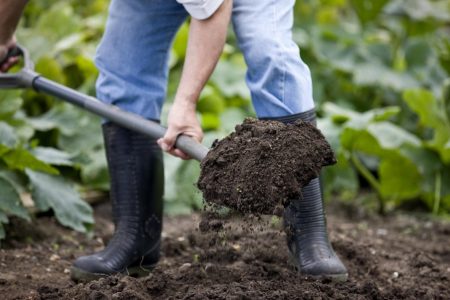
The best soil for seed germination is loose, with good aeration. Such characteristics can be achieved by mixing turf soil, peat and sand in equal proportions. It will not be superfluous to add a glass of ash to the soil substrate. The earth before the sowing procedure should be disinfected with potassium permanganate or calcined for 30 minutes in the oven at a temperature of 110 degrees.
To avoid the dive procedure, the seeds are optimally sown immediately in separate peat cups. These small containers are filled with fertile soil.Subsequently, seedlings are planted with the pots themselves.
Sowing technique
Seeds are sown in long shallow grooves, the distance between which is 2.5-3 centimeters. Since the seeds of kohlrabi are very small, it is very difficult to plant each seed separately, and therefore the seeds are heaped in bulk, distributing the amount with your fingers. It is optimal that between the seeds was an interval of at least a centimeter. If sowing is done in peat cups, then 3-4 seeds are placed in each container. In the soil, the seeds should be no deeper than 1.5 centimeters. Sow in moist soil.
The nursery is covered with film or glass, creating a greenhouse effect inside. For seed germination, it is necessary that the air in an improvised greenhouse be warmed up to +20 degrees. As soon as the seedlings appear above the surface of the earth, the protective shelter is removed, and the temperature is reduced to +9. This is necessary so that the seedlings do not stretch. After 7-10 days, the degree is increased to + 15- + 18.
Growing seedlings
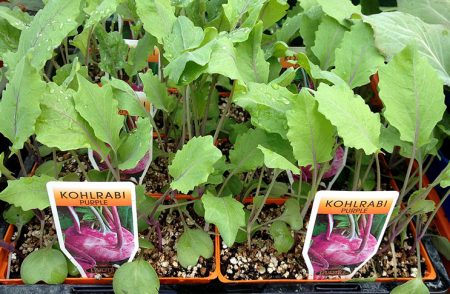
Two weeks after emergence, seedlings are first fed with mineral compounds. With the advent of the first pair of leaves, seedlings dive, replanting the strongest shoots in more spacious containers. The bushes that originally grew in separate containers are thinned out.
Keep in mind that not all seedlings can withstand picking, so initially sow seeds with a margin.
A week before planting seedlings in the garden, they stop watering it. Kohlrabi seedlings are planted in May, when the soil has already warmed up enough. You can cover the plot a couple of weeks before the cabbage is planted - such a manipulation will create additional heat in the soil layers. Do not rush to seedlings - too cold ground can trigger the release of the arrow.
The cabbage plot is prepared in advance: in the autumn organic matter is added, and in the spring humus, superphosphate, urea and wood ash are added. It will not be amiss to disinfect the earth by spilling it with boiling water or fungicide. Mature seedlings should have 5-6 leaves.
Bushes are planted densely: between rows of 35-40 centimeters, between plants - 15-20 centimeters. For later varieties, the spacing between seedlings can be made a little longer. Planting depth - before the start of growth of the first pair of leaves. The plantings on top are covered with a film or agrofibre - so the cabbage will take root more quickly under the new conditions and start growing.
Too deep planting of seedlings can lead to a delay in the formation of stems and premature flowering.
Subtleties of further care
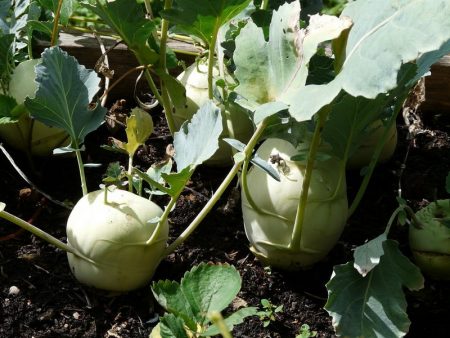
Kohlrabi cabbage is unpretentious, but still gives good yields only with proper care. Violation of the growing conditions can lead to shootings of plants and the formation of poor quality vegetables. It is preferable to grow it on the southeast side of the site - this territory is well lit in the morning and most often it is calm.
After transplanting seedlings, the soil at the base of seedlings is compacted and watered for the first time. To reduce evaporation, a wet bed is sprinkled on top with a layer of dry earth. Loosening and weeding is carried out regularly, avoiding deterioration of soil quality. Water the cabbage only with warm water. If necessary, carry out additional thinning.
Watering and feeding
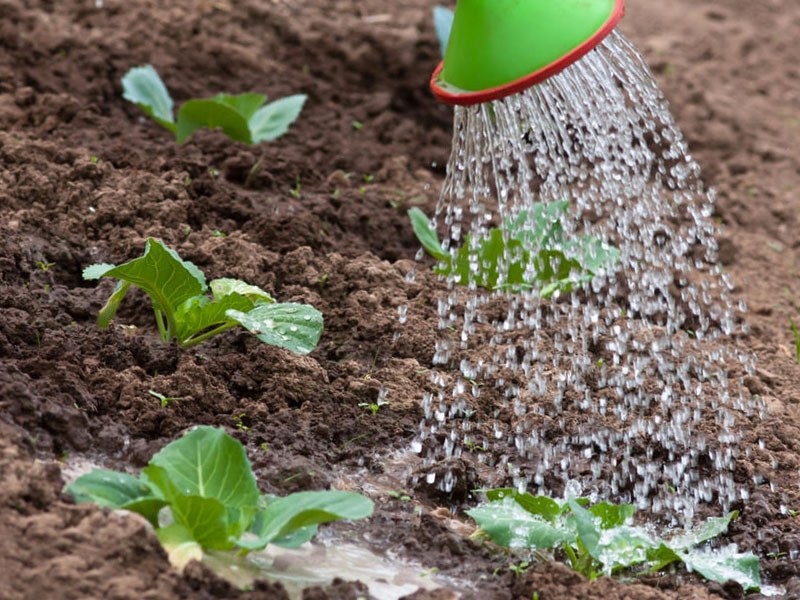
Although cabbage loves water, it should be watered sparingly. Otherwise, the appearance of a fungus can be provoked. In the first week after transplanting seedlings, the garden is watered every other day, spending 200 milliliters of water for each seedling. Then, water consumption is increased (up to a liter per plant), and the number of irrigations is reduced to one per week. Cabbage is especially in need in mid-June, with the onset of hot days.Kohlrabi does not need a large amount of water, like other types of cabbage, but still it is impossible to prevent the soil from drying out, as this will affect the quality of the fruit.
Untimely or inadequate watering forms dry and stiff stem-trees, which often crack.
Watering is combined with top dressing. Fertilizing is carried out 3-4 times for the entire growing season with an interval of two weeks. The first top dressing is arranged after a dive with trace elements. The next time fertilizers are applied during planting. This time, chicken droppings or rotted manure are added to the soil. Then again apply mineral fertilizers. Before planting, you can arrange additional foliar spraying with a mixture of potassium sulfate (one tablespoon) and urea (one tablespoon) per 10 liters of water.
Cabbage is demanding on a balanced diet and can not tolerate calcium starvation.
Loosening and hilling
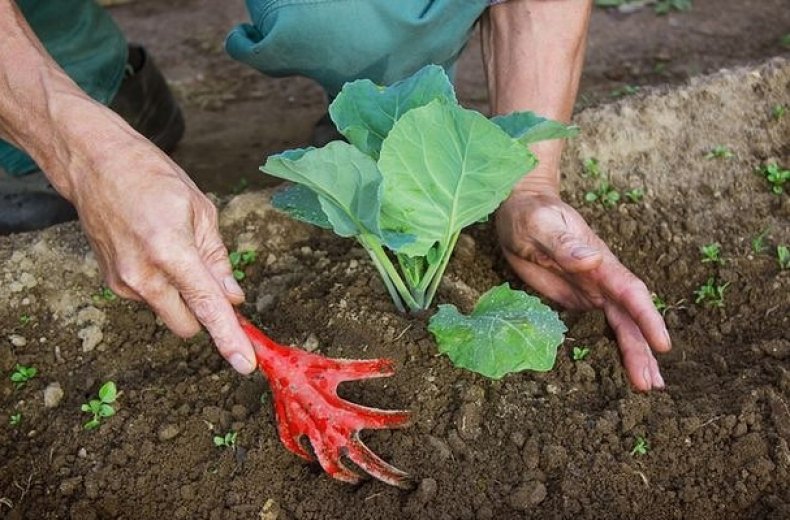
These two simple techniques play a significant role in the cultivation of kohlrabi cabbage, but they must be used very carefully, since the root system of the plant is close to the surface and is very poorly developed. Loosening is carried out several hours after watering, mainly in the evening. A centimeter layer is loosened under young seedlings; in adult plants, the depth of cultivation is about 5 centimeters. A couple of weeks after transplanting, seedlings are being trained. Raking the ground on the lower leaves activates the growth of root shoots, which will strengthen the plant. They sprinkle cabbage again a couple of weeks after the first procedure.
Protection against diseases and pests
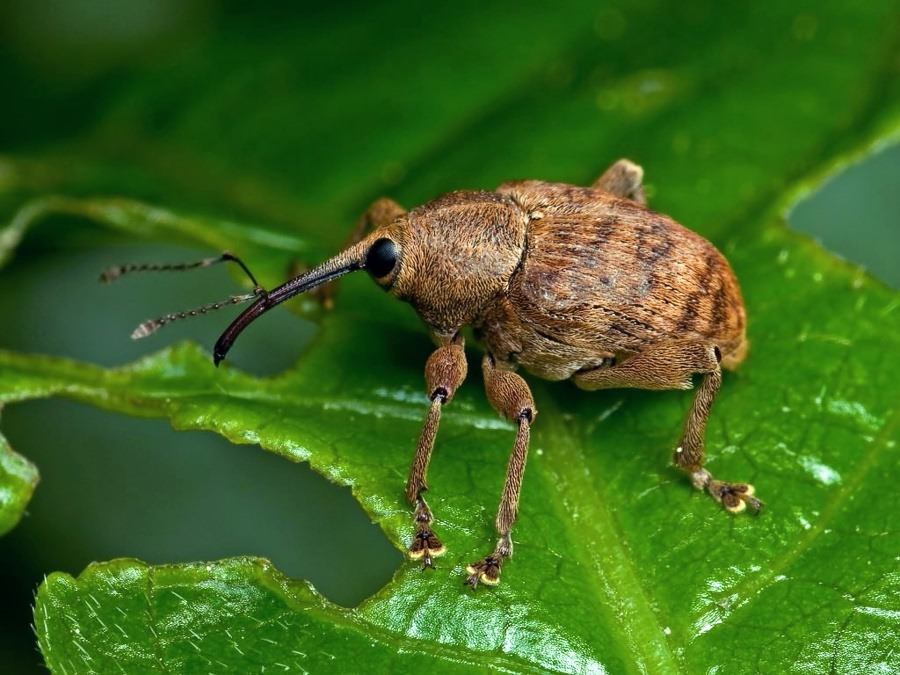
Kohlrabi have the same diseases that affect cruciferous plants. The main diseases of the culture include:
- Kilu
- black leg;
- bacteriosis;
- downy mildew;
- dry rot;
- mosaic and others.
Observation of the basics of agricultural technology will help to avoid the appearance of infection on the bed with cabbage:
- crop rotation compliance;
- seed treatment before sowing;
- regular tillage;
- regular cleansing of the site from weeds and plant debris;
- selection for the cultivation of disease-resistant hybrid varieties.
At the first stages of the development of the disease, correction of the conditions of maintenance will help save the plants: thinning, loosening, reducing irrigation, installing film shelters (with frequent rainfall and cooling). With a strong spread of the disease, bacterial preparations (Fitosporin M) are used. Against the black stalk, plants are sprayed with fungicides Planriz, Gamair, Alirin-B. From bacterioses, such drugs as Bactofit and Binoram are effective.
It is known that many pests are reserves of infections, in particular, such as alternariosis, phomosis, bacteriosis and others. Therefore, it is important to conduct a comprehensive fight against insects, destroying them in every possible way.
The main threat to cabbage is delivered by such insects as:
- cruciferous fleas;
- cabbage fly;
- snails and slugs;
- aphids, cabbage scoop and whitewash.
Since kohlrabi negatively reacts to the processing of pesticides, the fight against pathogenic living creatures is possible only by folk methods. A method of soil treatment with ash, as well as aqueous solutions based on pepper and tobacco, cope well with the elimination of insects.
Collection and storage of kohlrabi cabbage
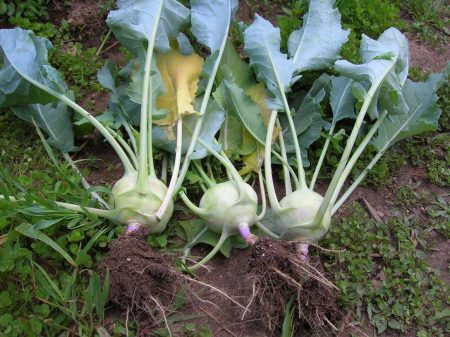
Cabbage is ready for use at the age of two months after sowing the seeds, upon reaching the stem crop in a diameter of 5-8 centimeters. The weight of the fork is 120-130 grams. With a strong increase in the size of the staple crop, cabbage coarsens, becomes tasteless, and most of the vitamins are lost. Stem beetles are dug out of the ground along with the roots. The lower leaves break off. Store kohlrabi with roots.
Fruit storage boxes are sanitized with bleach. Only whole stems must be stored, without signs of disease damage or mechanical defects.Keep cabbage in a cool room at a temperature of -1-0 degrees.
Kohlrabi can be stored in the refrigerator for up to four weeks.
Late cabbage is suitable for long-term storage. It is collected along with the white one, around the beginning of October. The last varieties, such as Giant, Violet, Delicious blue, retain their commercial qualities for the longest time. Violet varieties are stored much longer than green. The fruits collected for long-term storage are sprinkled with wet sand - this will save the crop up to 8 months. And if you freeze cabbage, then it will survive until spring.
Tips & Tricks
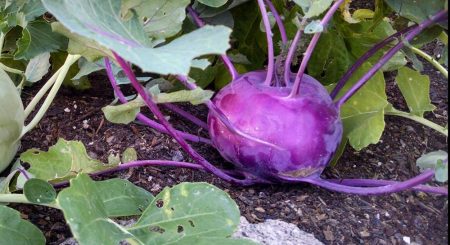
- It is categorically not recommended to water kohlrabi with the sprinkling method, as this often leads to the spread of downy mildew.
- Plants should be well ventilated and receive enough sun, so the density of plantings should be observed.
- Before planting seedlings, the roots can be dipped in a mash of clay and mullein with the addition of Phytolavin biofeedback.
- Kohlrabi is absolutely unpretentious to its neighbors. She easily gets along in the aisle of tomato, cucumber and carrot beds.
- Several varieties of kohlrabi should be planted at once with different ripening periods - this will allow you to have a harvest from early summer to late autumn.
- Fresh cabbage is not recommended for cabbage. From organics, it is better to use humus and bird droppings.
- The Russian climate involves the cultivation of kohlrabi cabbage mainly in seedlings. They grow vegetables at home in nurseries or heated greenhouses.
Conclusion
Many of our compatriots still consider kohlrabi - a difficult crop to grow. However, those who are already familiar with the intricacies of cultivating this vegetable claim that even an inexperienced gardener can grow kohlrabi. To obtain a healthy crop, it is enough to follow simple agricultural rules and use the simple advice of experienced summer residents.

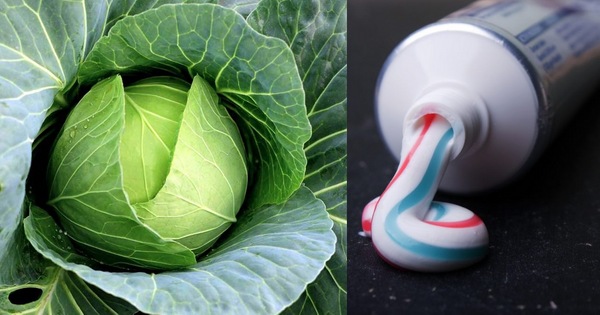
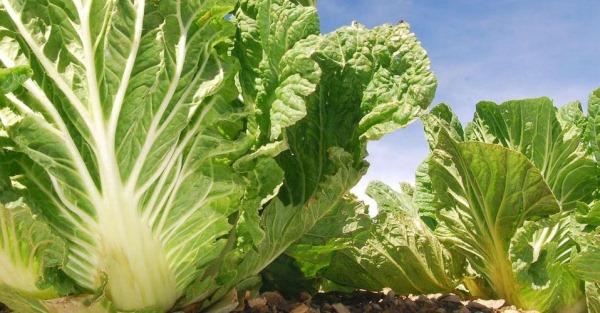
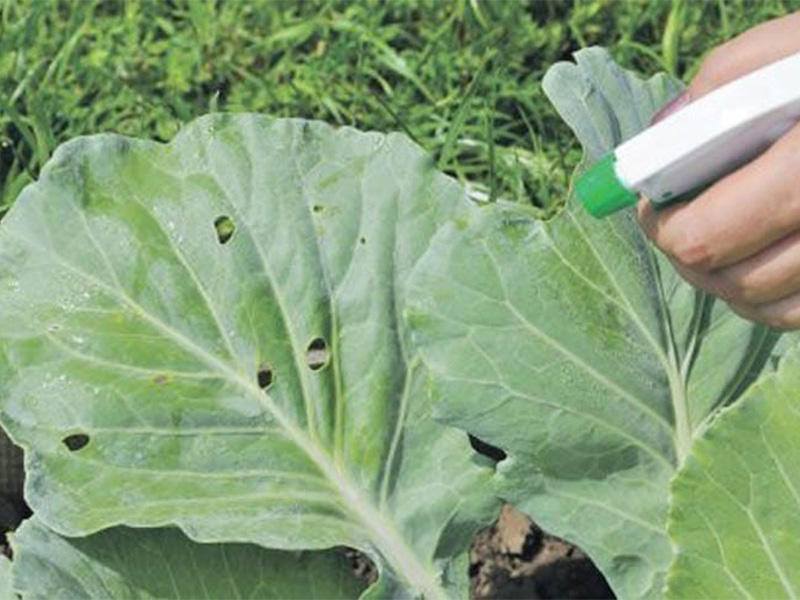
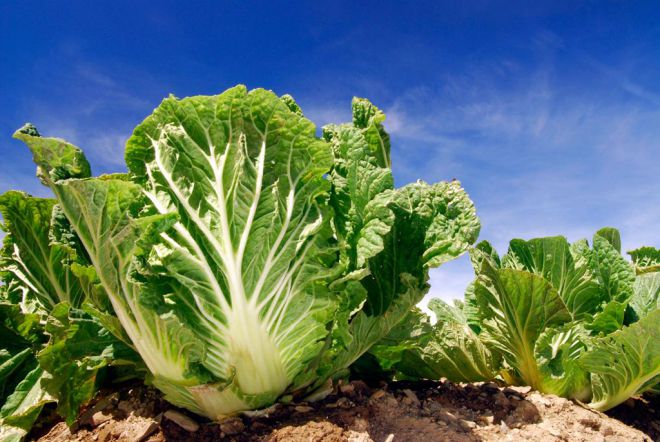 How to grow Chinese cabbage on your site?
How to grow Chinese cabbage on your site?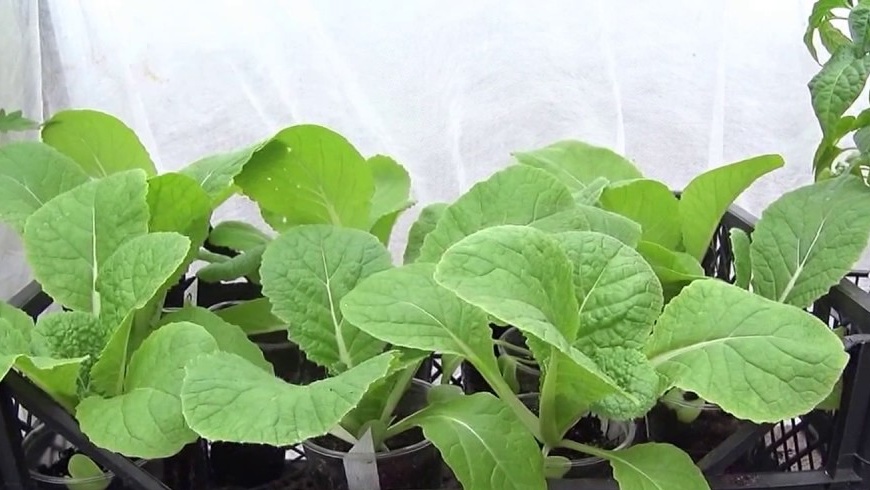 When to plant Chinese cabbage on seedlings in 2024
When to plant Chinese cabbage on seedlings in 2024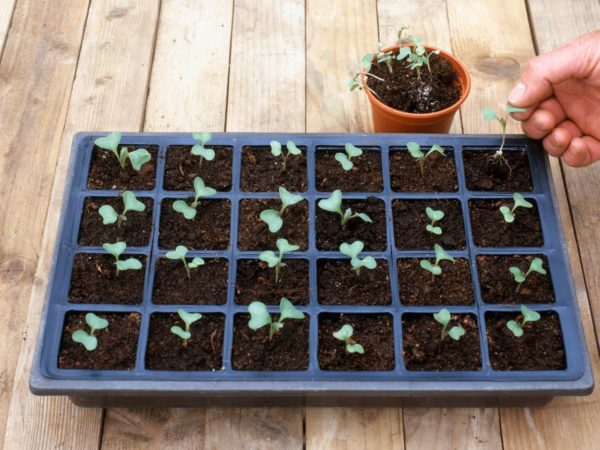 When to sow cabbage for seedlings in 2019 on the moon
When to sow cabbage for seedlings in 2019 on the moon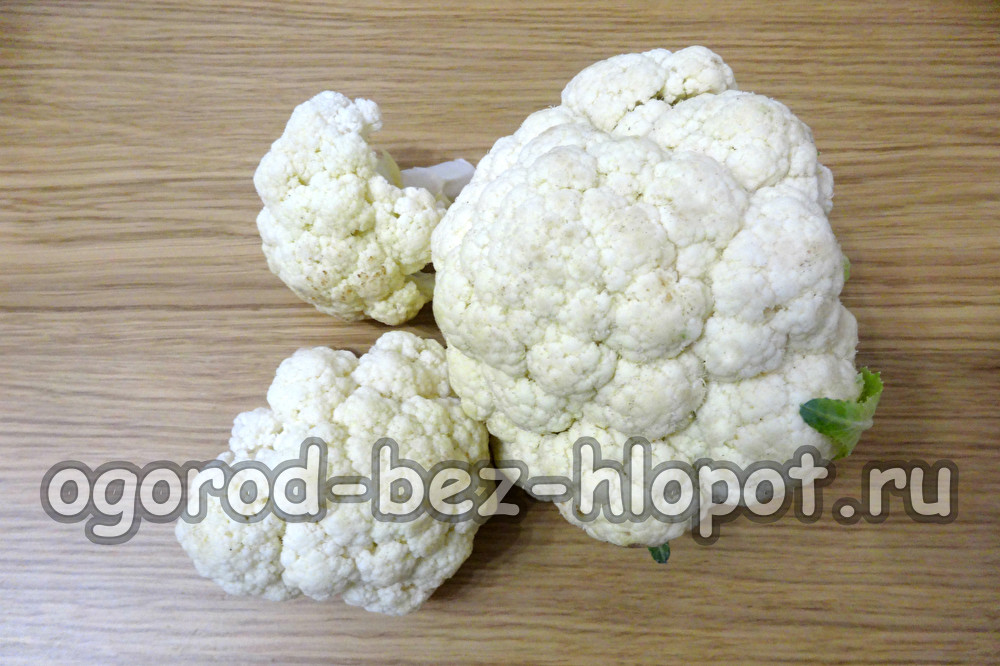 Cauliflower: how to grow large snow-white inflorescences
Cauliflower: how to grow large snow-white inflorescences